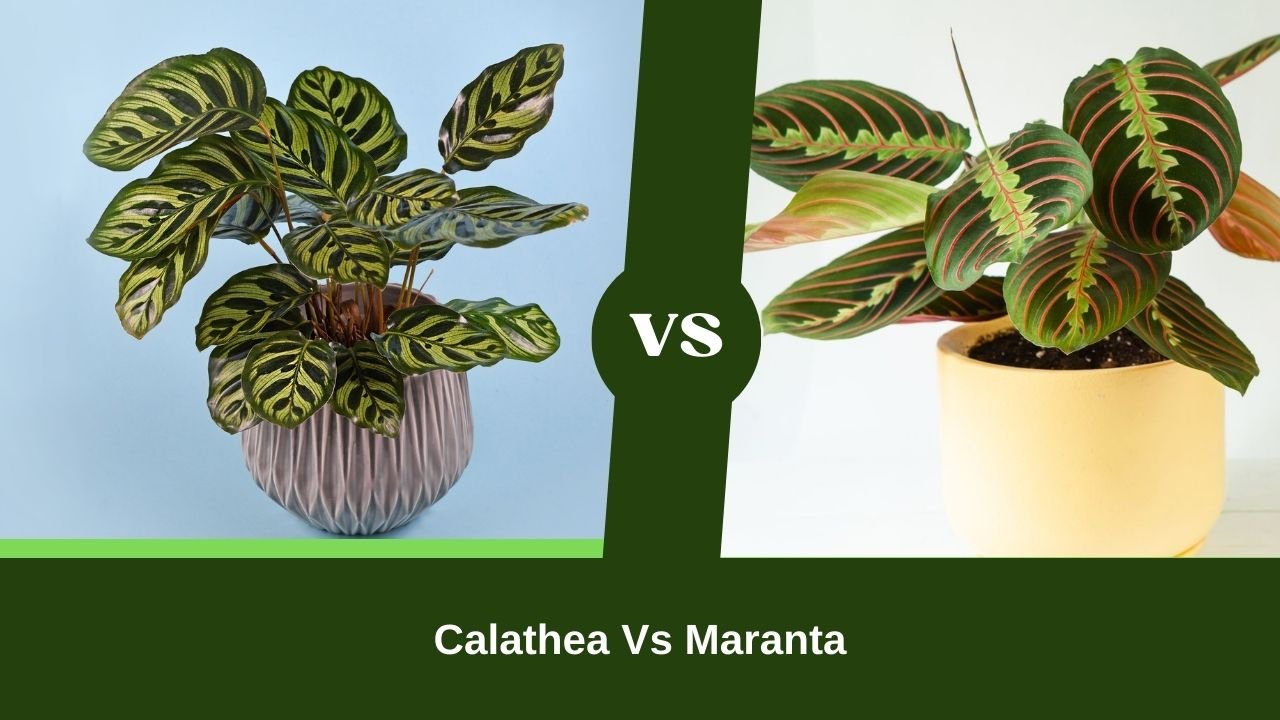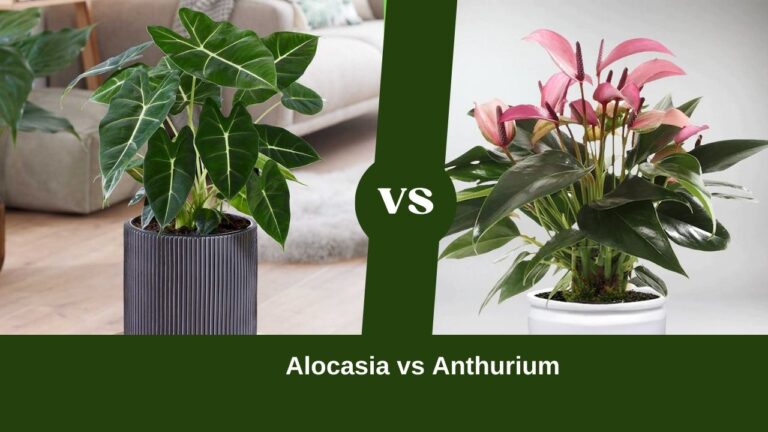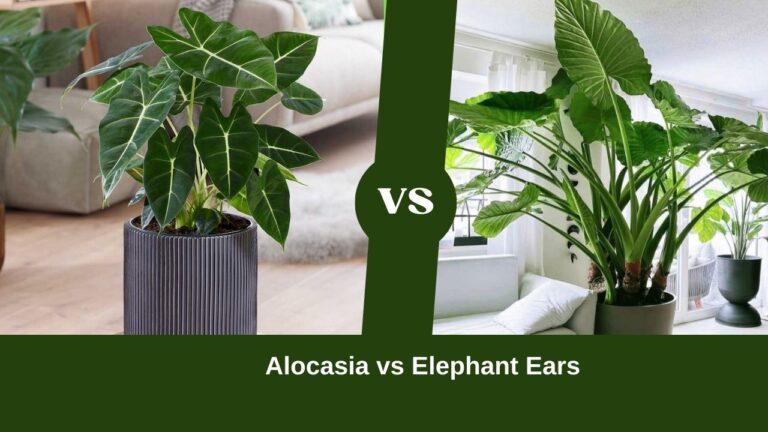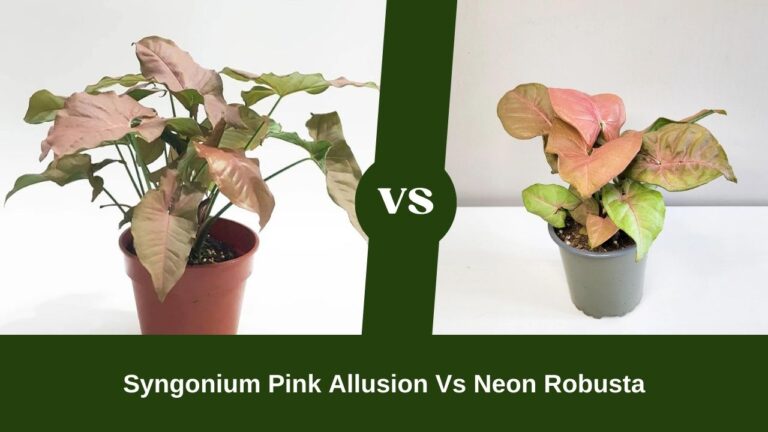Calathea Vs Maranta: Appearance, Care, And Other Differences

Many people think that both plants are almost the same in almost every way.
But there are some differences between these two in leaf color, size, and growth habits. This is the main difference between these two plants.
In this article, I gonna explore the distinct care strategies required to nurture Calathea and Maranta to their full potential.
From light preferences to watering routines, temperature requirements, and beyond.
Table of Contents
Calathea Vs Maranta: Generic Differences

Here are some vital points of differences between Calathea and Maranta. Have a look and keep it in mind. These will help you to understand the nature of these plants.
| Criteria | Calathea | Maranta |
| Common Name | Cathedral Plants, Peacock Plants | Rabbit’s Foot, Prayer Plant |
| Scientific Name | Calathea ornata or Goeppertia ornata | Maranta leuconeura |
| Family | Marantaceae | Marantaceae |
| Plant Type | Perennial, Indoor | Perennial, Indoor |
| Toxicity | Non-Toxic to Pets | Non-Toxic to Pets |
| Life Time | 5+ years with proper care | 5+ years with proper care |
Calathea Vs Maranta: Appearances
In the table, you will see the main differences between these two plants. Then the detail is in the later part.
| Criteria | Calathea | Maranta |
| Size | About 2 feet in height | Usually 1-2 feet tall. |
| Leaves | Broad, patterned. | Smaller, often with stripes. |
| Flower | Rarely blooms indoors. | Small, white, rarely blooms. |
| Root | Rhizomatous roots. | Shallow, fibrous roots. |
| Stems and Bark | Green, fleshy stems. | Green or red stems, no bark. |
| Growth Habit | Grow fairly slowly | Grow wide rather than tall. |
Size Differences
Calathea typically grows to a height of about 2 feet, presenting a moderately sized plant with broad, patterned leaves.
In comparison, Maranta is slightly smaller, usually ranging from 1 to 2 feet in height, featuring smaller leaves often adorned with distinct stripes.
The size distinction makes Calathea a visually striking choice for those desiring a larger indoor plant, while Maranta’s more compact stature is suitable for smaller spaces or plant collections.
Leaves Color And Size
Calathea exhibits broad leaves with intricate patterns, often featuring vibrant shades of green, white, and pink.
On the other side, Maranta has smaller leaves with distinct stripes, creating an understated yet elegant appearance.
The leaves of Calathea are characterized by their larger size and bold patterns, while Maranta’s smaller leaves showcase unique striping for a more subtle visual impact.
Flower Differences
Both Calathea and Maranta rarely bloom indoors, and when they do, the flowers are small and white.
Flowering is not the primary appeal of these plants; instead, they are cultivated for their ornamental foliage.
The infrequent blooming adds a delicate touch to the overall aesthetic but is not a defining feature for either Calathea or Maranta.
Stems And Bark Differences
Calathea is characterized by green, fleshy stems that support its broad leaves, with no prominent bark features.
Instead, Maranta may exhibit stems with varying colors, including green or red, and generally lacks significant bark on its stems.
The differing stem characteristics contribute to the distinct appearances of Calathea and Maranta, with Calathea maintaining a smoother stem profile, while Maranta’s stems may add subtle color variations.
Calathea Vs Maranta: Care Differences
Taking care of your plants is important because we all want our plants to grow well. Here are some differences between the care strategy of these two plants.
| Criteria | Calathea | Maranta |
| Light Requirements | Medium, indirect sunlight | Bright, indirect light but will tolerate a bit of shade. |
| Watering Needs | Moderate, once a week. | Frequent, two times a week. |
| Soil Type and pH | Well-drained, pH 6.5 and 7. | Loamy, pH 5.5 to 6.0. |
| Temperature and Humidity | 65-75°F, moderate humidity. | 60-70°F, high humidity. |
| Fertilization | Once a month with balanced fertilizer. | Every two weeks in the growing season. |
| Pruning and Maintenance | Minimal; remove dead leaves. | Regular; trim for business. |
| Pest and Disease Susceptibility | Low; resistant to most pests. | Moderate; watch for spider mites. |
| Propagation Methods | Cuttings or division. | Seed or stem cuttings. |
Light Requirements
Calathea prefers medium, indirect sunlight, making it well-suited for spaces with filtered light. In contrast, Maranta thrives in bright, indirect light but can tolerate some shade, offering more flexibility in placement.
Watering Needs
Calathea requires moderate watering, typically once a week, to maintain soil moisture. Maranta, on the other hand, needs more frequent watering, about twice a week, to keep its loamy soil consistently damp.
Temperature and Humidity
Calathea prefers temperatures between 65-75°F and moderate humidity levels. Maranta thrives in a slightly cooler temperature range of 60-70°F but requires higher humidity, creating distinct environmental preferences for each plant.
Fertilization
Calathea benefits from monthly fertilization with a balanced fertilizer, providing essential nutrients. Maranta requires more frequent feeding, needing fertilizer every two weeks during the growing season to support its growth and vibrancy.
Pruning and Maintenance
Calathea requires minimal pruning, focusing on the removal of dead leaves to maintain its appearance. In contrast, Maranta necessitates more regular pruning for a bushier look, making it a choice for those who enjoy a more sculpted and compact plant.
Hope you clear Now
Though all the discussion is saying about the minor differences between these two plants. But you can’t avoid these minor differences.
The detailed discussion highlights the nuanced differences in size, leaf characteristics, flowering, root structure, stems, and growth habits between Calathea and Maranta.
Each plant offers a unique aesthetic, catering to different preferences in indoor plant decor.
That was all about these two plants.
References:
- https://garden.org/thread/view/98761/What-is-the-difference-between/
- https://plantworldlondon.com/product/maranta-leuconeura/#:~:text=Height%20%26%20Growth%20Rate%3A%20Reaches%20an%20ultimate%20height%20of%20around%2030cm.&text=Toxicity%3A%20Non%2Dtoxic.,Child%20%26%20Pet%20Friendly.
- https://www.plantsforallseasons.co.uk/blogs/calathea-care/a-guide-to-calathea-soil#:~:text=Calathea%20plants%20don’t%20like,will%20eventually%20kill%20your%20plant.
- https://plnts.com/en/care/houseplants-family/maranta#:~:text=Marantas%20are%20tropical%20plants%20that,leaves%20to%20reduce%20water%20loss.






